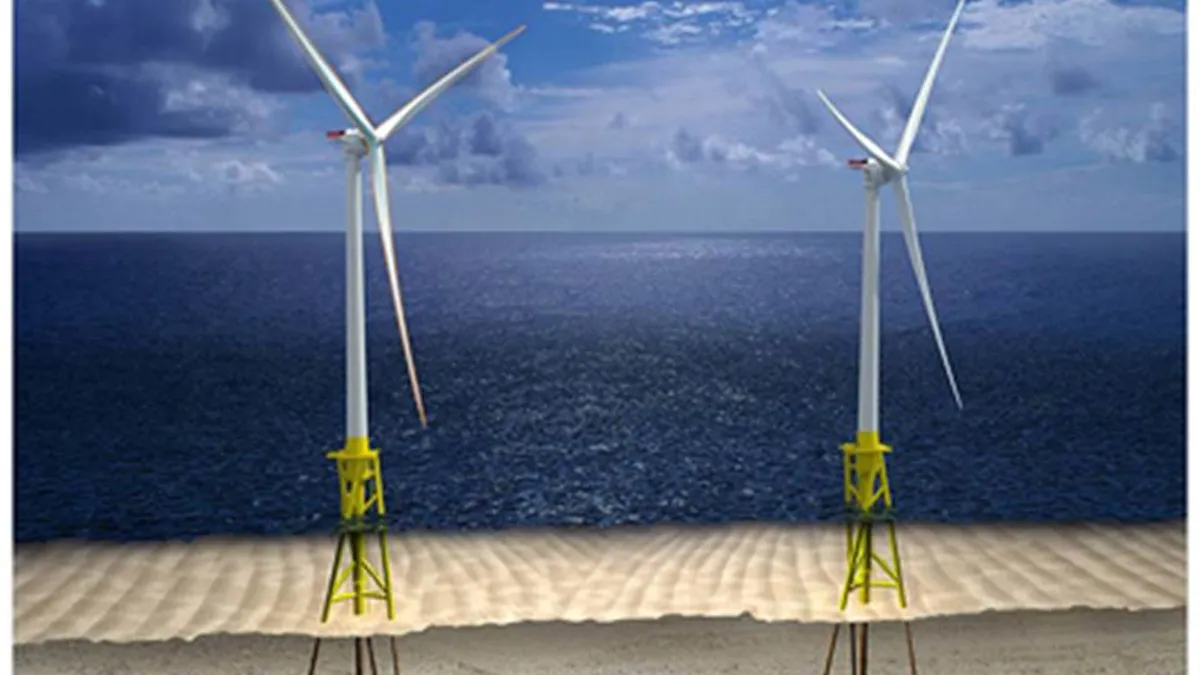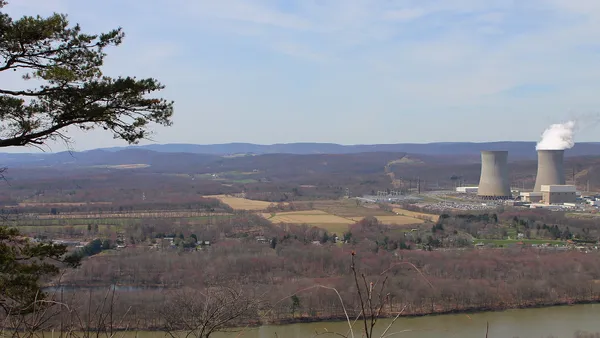Dive Brief:
- Dominion Energy's generation subsidiary is watching Northeast offshore wind development announcements while tracking its investments in the renewable energy resource, executives said on the company's Q2 earnings call.
-
Dominion's Power Generation Group President and CEO Paul Koonce said the life cycle cost equivalent of offshore wind turbines in the Northeast has been "$85 [per MWh] and potentially higher," and the company is waiting for prices to drop while proceeding with their investment. "In Virginia, we're looking at the need to get the life cycle cost equivalent down closer to maybe the $80 range," he said in the investor call.
- Dominion's Power Generation Group subsidiary will be investing $1.1 billion through 2023, $300 million of which will be for its pilot project. Dominion will proceed with onshore construction next summer for two test turbines.
Dive Insight:
Dominion has expressed the possibility of developing more than 2,000 MW of offshore wind off the Virginia coast.
"I would pencil out maybe a $3,000 per kilowatt-hour installed," Koonce said. "And if you do that, you come up with a sizable investment but that would be out over the entire decade."
Koonce reiterated that Dominion is watching the Northeast offshore wind market closely, in search of a capital cost improvement anywhere from 15% to 20% in the life cycle cost equivalent of offshore wind turbine.
"We think that those costs can move in that direction once we stand up the U.S. supply chain. That's been a real benefit that they've seen in Europe is being able to scale up the supply chain," Koonce said.
"Dominion's commitment is quite remarkable as reflected in the size of its investment; however, Dominion is in the role of a multi-phase developer unlike many other US utilities," Liz Burdock, head of the Business Network for Offshore Wind, told Utility Dive.
Other U.S. utilities have acquired offshore wind sites, partnering up with European offshore wind developers. In February, Eversource acquired 50% ownership of two New England offshore wind lease areas from Ørsted for approximately $225 million, Burdock added.
"It is exciting to see a U.S. utility embrace offshore wind and we believe Dominion will help balance the offshore wind market with increased U.S. developer participation and further help drive down costs as well as help modernize energy regulations," Burdock said. "Rapid price reduction of electricity may start attracting corporate customers."
Koonce did not mention the viability of corporate off-takers. However, he noted "some speculation" about the possibility of renewal for the wind production tax credit. The 30% tax credit will expire at the end of 2019, although several bipartisan bills have been proposed this year to extend the incentive.
Sens. Tom Carper, D-Del., and Susan Collins, R-Maine, introduced a bipartisan bill at the beginning of June to extend the wind tax credit to apply to offshore wind through 2027.
Dominion also sees another opportunity for cost reductions as the size of turbines increases.
"[T]he development of larger turbines, 11 megawatt and greater, will drop those costs down closer to what we think we need in order to really see the build-out in Virginia," Koonce said.
A larger domestic supply chain and larger turbines could achieve the life cycle cost equivalent cost reductions in the 2023-2024 timeframe, he added.
"So we're bullish, but we're going to do what's right for our customers," Koonce said.














